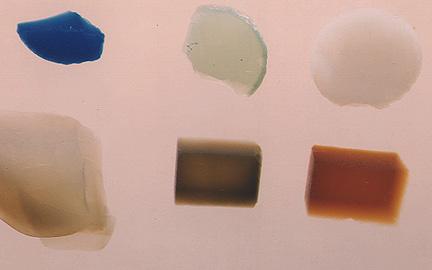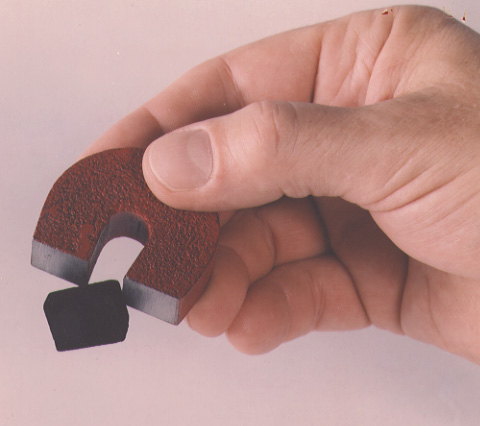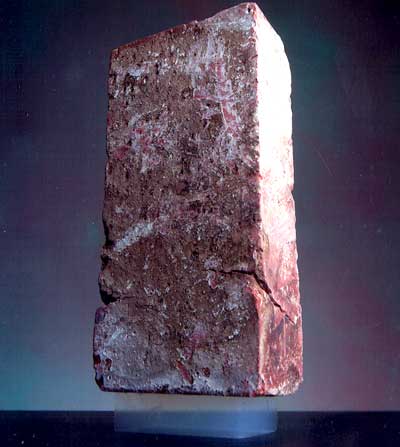

Research and What Lies Ahead
Spinoffs
Though most research is done using silica aerogels which are the most common, aerogels have been created using other
starting materials. At first other materials were used simply to see if it was possible. However, eventually some aerogels created
from other materials were found to have unique abilities and possibilities of their own. New fields of research have been created
due to these new variations. Some aerogels may simply vary by color while others display properties such as magnetism.


The deep blue aerogel contains nickel; Contains Iron Oxide
the pale green, copper; the black, carbon and iron;
the orange, iron oxide;
and the
remaining aerogels, organic compounds.
The Dark Side of the For....err....Aerogels Sound Byte
The aerogel field into which the most research is going into, other than silica aerogels, is dark aerogels. Dark aerogels are
aerogels simply carbon aerogels. Carbon aerogels are created by pyrolyzing a Sol containing organic compound in an inert medium
such as ethanol. Ethanol can be pyrolyzed at 1,000–1,200 °C in an argon flame. This process removes everything except the
carbon and leaves behind the dark aerogels. One interesting thing about carbon aerogels is their extreme blackness (from which
their nickname obviously comes), caused by internal scattering and absorption of light by the graphite molecules that make up the
aerogel. Carbon aerogels are excellent electrical conductors so they are therefore useful for supercapacitors. Capacitance increases
as the distance between conductors decreases and the surface area of the conductors increases. Because carbon aerogels have
huge surface areas per unit mass or volume and tiny pores, researchers have achieved capacitances as high as 104 F/g and 77
F/cm3.
Carbon aerogels show promise in many different areas and new applications continue to turn up for carbon aerogels.
Physicists recently announced that they had produced a carbon aerogel made not of graphite particles but of nanotubes. The
aerogel they produced supposedly has great promise. Supposedly, it is highly elastic rather than rigid, so it can be spun into pure
nanotube fibers with unique electrical properties and with strength greater than that of Kevlar. We can only wait and see where
these "dark" aerogels take us in the future.
The Strong Aerogels
There is always a need for strong lightweight materials in our modern world. Silica aerogels would be extremely
attractive if they were not fragile when made with very low density. However, recently, the strength of silica aerogels has been
improved by a factor of over 100 through cross-linking the nanoparticle building blocks of preformed silica wet gels with
polyhexamethylene diisocyanate. These composites do not absorb liquid as silica aerogels do and they do not collapse when in
contact with liquids. Aerogels are relatively strong as it is. They are able to support many times their own weight as the picture
below shows and this new modification to aerogels looks to be monumental for the future.

Aerogel supporting a brick
Discovery and History // Synthesizing Aerogels // Uses: Current and Future // Research and What Lies Ahead